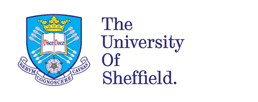
Robert I. Griffiths, Richard L. Barron, Michelle L. Gleeson, Mark D. Danese, Anthony O’Hagan, Victoria M. Chia, Jason C. Legg and Gary H. Lyman
Outcomes Insights Inc., USA. Johns Hopkins University School of Medicine, USA, Amgen Inc., USA, University of Sheffield, UK, and Duke University USA.
Publication details: Pharmacoeconomics 30, 103-118, 2012.
Background: Granulocyte-colony stimulating factor (G-CSF) reduces the risk of severe neutropenia associated with chemotherapy, but its cost implications following chemotherapy are unknown. Objective: Our objective was to examine associations between G-CSF use and medical costs after initial adjuvant chemotherapy in early-stage (stage I–III) breast cancer (ESBC).
Methods: Women diagnosed with ESBC from 1999 to 2005, who had an initial course of chemotherapy beginning within 180 days of diagnosis and including ‡1 highly myelosuppressive agent, were identified from the Surveillance, Epidemiology, and End Results (SEER)-Medicare database. Medicare claims were used to describe the initial chemotherapy regimen according to the classes of agents used: anthracycline ([A]: doxorubicin or epirubicin); cyclophosphamide (C); taxane ([T]: paclitaxel or docetaxel); and fluorouracil (F). Patients were classified into four study groups according to their G-CSF use: (i) primary prophylaxis, if the first G-CSF claim was within 5 days of the start of the first chemotherapy cycle; (ii) secondary prophylaxis, if the first claim was within 5 days of the start of the second or subsequent cycles; (iii)G-CSF treatment, if the first claim occurred outside of prophylactic use; and (iv) no G-CSF. Patients were described by age, race, year of diagnosis, stage, grade, estrogen (ER) and progesterone (PR) receptor status, National Cancer Institute (NCI) Co-morbidity Index, chemotherapy regimen and G-CSF use.
Total direct medical costs ($US, year 2009 values) to Medicare were estimated from 4 weeks after the last chemotherapy administration up to 48 months. Medical costs included those for ESBC treatment and all other medical services received after chemotherapy.
Least squares regression, using inverse probability weighting (IPW) to account for censoring within the cohort, was used to evaluate adjusted associations between G-CSF use and costs.
Results: A total of 7026 patients were identified, with an average age of 72 years, of which 63% had stage II disease, and 59% were ER and/or PR positive. Compared with no G-CSF, those receiving G-CSF primary prophylaxis were more likely to have stage III disease (30% vs 16%; p< 0.0001), to be diagnosed in 2003–5 (87%vs 26%; p < 0.0001), and to receive dose-dense AC-T (26% vs 1%; p< 0.0001), while they were less likely to receive an F-based regimen (12% vs 42%; p< 0.0001).
Overall, the estimated average direct medical cost over 48months after initial chemotherapy was $US42 628. In multivariate analysis, stage II or III diagnosis (compared with stage I),NCI Co-morbidity Index score 1 or ‡2 (compared with 0), or FAC or standard AC-T (each compared with AC) were associated with significantly higher IPW 48-month costs. Adjusting for patient demographic and clinical factors, costs in the G-CSF primary prophylaxis group were not significantly different from those not receiving primary prophylaxis (the other three study groups combined). In an analysis that included four separate study groups, G-CSF treatment was associated with significantly greater costs (incremental cost = $US2938; 95% CI 285, 5590) than no G-CSF.
Conclusions: Direct medical costs after initial chemotherapy were not statistically different between those receiving G-CSF primary prophylaxis and those receiving no G-CSF, after adjusting for potential confounders.